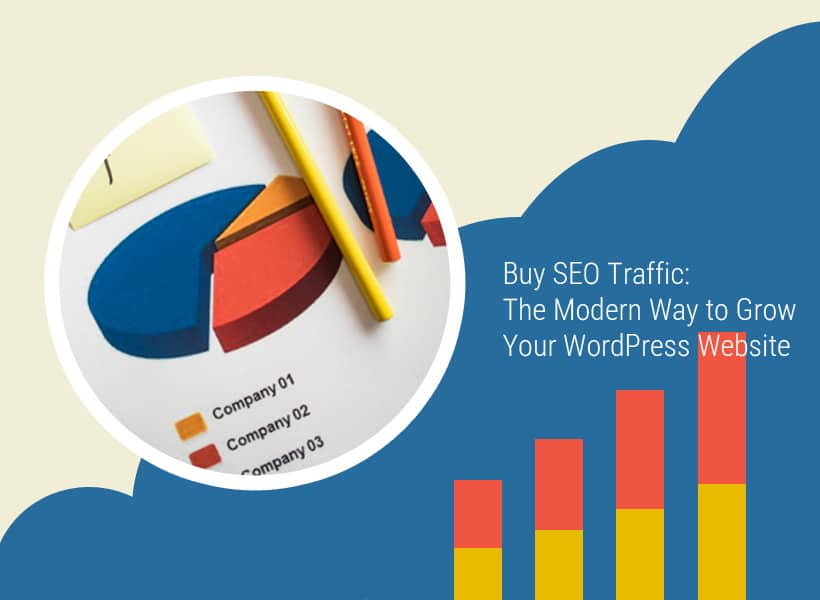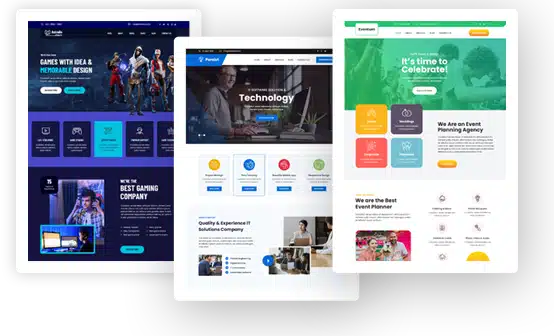Buy SEO Traffic: The Modern Way to Grow Your WordPress Website

In 2025, standing out online is a marathon, not a sprint. Every day, thousands of new WordPress sites are launched, each with the dream of attracting loyal readers, eager buyers, or passionate subscribers. The competition is fierce. That’s why more and more website owners are considering a mix of organic strategies and more ingenious shortcuts. Among those shortcuts, the phrase buy SEO traffic keeps popping up. What does it mean for a WordPress site? Can it help you, or is it just another overhyped trick?
Let’s break down everything you need to know — from the basics of attracting visitors to the dos and don’ts of paid traffic, all tailored to the realities of WordPress in 2025.
Why Traffic Matters More Than Ever
Traffic is the lifeblood of any website. It doesn’t matter if you’re running a personal blog, a niche online shop, or a corporate landing page — without visitors, even the most beautiful WordPress site sits alone in the dark. High-quality traffic brings:
- Readers who become subscribers
- Shoppers who become loyal customers
- Partners, sponsors, and guest posting opportunities
The question is: how do you get this traffic?
The Organic Approach: Building a Foundation
Before considering paid options, ensure your WordPress website is ready to convert traffic into results.
-
Content That Connects
WordPress is famous for its blogging capabilities, and for good reason. Well-written, genuinely helpful content is still the #1 way to bring organic visitors from Google and other search engines. Focus on articles that answer your audience’s fundamental questions. Use keyword research tools to find what people are searching for, but write for humans first, not just algorithms.
-
Technical SEO: Don’t Ignore the Basics
Install an SEO plugin (like Yoast SEO or Rank Math). Optimize your meta titles, descriptions, and images. Make sure your site loads fast and works on mobile devices. Submit an XML sitemap to Google Search Console. These steps build a strong foundation to keep and convert the traffic you attract.
-
Internal Linking & User Experience
Create logical site navigation and use internal links to guide users from one post or product to another. A well-linked site helps with SEO and keeps users engaged, increasing page views and session duration. Choose a mobile-responsive theme and pay attention to readability.
-
Encourage Community & Sharing
Reply to comments, create polls, and invite user-generated content. Integrate social sharing plugins, making it easy for readers to spread the word about your posts. A loyal community amplifies your content far beyond what you could achieve alone.
The Shortcut: Why People Buy SEO Traffic
Let’s be honest: building organic traffic takes time. Buying SEO traffic can look very tempting in a world where everyone wants instant results, especially for new or stalled projects. But what exactly is bought traffic?
What Does “Buying SEO Traffic” Mean?
Essentially, you’re paying a service to deliver real visitors to your website. The idea is that these visitors are targeted — they come from your niche or are interested in your type of content. Ideally, they behave like real users, browsing multiple pages, clicking links, and helping boost your engagement metrics.
Why Do WordPress Owners Try It?
- Kickstart a new site: New websites often suffer from the “empty restaurant” problem — nobody wants to be the first guest. A boost in traffic can help get the ball rolling.
- A/B testing and conversions: Paid visitors allow you to test landing pages, headlines, and calls to action on real people, collecting data much faster.
- Perceived authority: More traffic can make your site look more popular to users and potential business partners.
- SEO signals: There’s debate about whether paid traffic helps SEO rankings directly, but higher engagement (time on site, pages per session) could have a positive effect over time.
The Risks and Downsides
Not all paid traffic is created equal. Some sellers offer only bot traffic, not real humans. This won’t help your rankings or conversions, and can harm your reputation if caught. Always research traffic providers, look for reviews, and start with small campaigns to test quality.
Combining Organic and Paid Traffic for WordPress Success
The smartest site owners use both worlds:
- Organic strategies for sustainable, long-term growth
- Paid traffic for short-term boosts, testing, or launching new features
Here’s how you can integrate both for maximum effect.
-
Use Paid Traffic to Supplement, Not Replace
Let organic growth be your base. Use bought SEO traffic only to accelerate things when needed, such as launching a new product, testing a funnel, or reviving a stale blog. Never rely 100% on paid visitors.
-
Monitor Your Results Closely
Whether your visitors are organic or paid, use tools like Google Analytics and Search Console. Monitor bounce rates, time on site, and conversions. If paid traffic is low quality or doesn’t engage, switch providers or adjust your targeting.
-
Focus on Engagement
The real value of any traffic — bought or earned — is engagement. Encourage comments, shares, newsletter signups, or sales. Ensure your site gives visitors a reason to stay, interact, and return.
-
Maintain Trust and Authenticity
Don’t deceive your regular readers. Always prioritize genuine content, and never inflate your stats dishonestly. Used ethically, paid SEO traffic is a tool, not a crutch.
Modern SEO Traffic Tactics for WordPress in 2025
Let’s get practical. Here are concrete steps to boost your traffic this year:
- Leverage Content Upgrades: Offer free resources (checklists, guides) in exchange for emails.
- Refresh Old Posts: Update your best content with new data and better visuals. Google loves fresh information.
- Target Long-Tail Keywords: Less competition, more specific traffic.
- Collaborate: Guest posts, interviews, and expert roundups with other WordPress site owners expand your reach.
- Use Paid Social Promotion: Boost key posts on Facebook, Twitter, or niche forums.
- Experiment with Paid Traffic: Once you’ve optimized your site, run a small test campaign with a reputable provider. Monitor results before scaling up.
Should You Buy SEO Traffic for Your WordPress Site?
Ultimately, the answer depends on your goals, budget, and growth stage. Buying SEO traffic isn’t a silver bullet, but it can be helpful when used wisely. Pair it with great content, technical optimization, and a fundamental audience understanding.
If you decide to try it, start small. Track your results obsessively. Use the insights you gain to refine your approach. And remember: the best WordPress sites don’t just chase numbers — they build real communities, solve real problems, and leave visitors wanting to return for more.
Final Thoughts
Success with WordPress in 2025 is about balance. Combine the timeless basics with high-quality content, strong SEO, community, and modern traffic tactics, including ethical paid options. Doing this will give your website the best possible shot at standing out in a crowded digital landscape.
So, whether you buy SEO traffic, stick to organic growth, or blend the two, keep learning, testing, and growing. Your audience is out there, ready to discover what you offer.
FAQ: Buying SEO Traffic for WordPress
1. Is buying SEO traffic safe for my WordPress website?
Buying SEO traffic is generally safe if you use reputable providers that deliver real, human visitors, not bots. Always research the service, start with small campaigns, and monitor your analytics for any unusual patterns. Avoid providers that promise instant, unrealistic results or use fake clicks.
2. Will purchased SEO traffic help my site rank higher in Google?
Paid traffic by itself does not guarantee better rankings in Google. However, if the visitors are real and engage with your content, it can indirectly support your SEO by improving metrics like time on site and bounce rate. The best results always come from a blend of organic SEO and smart, ethical paid campaigns.
3. How do I know if the traffic I bought is real?
Analytics tools like Google Analytics are used to track user behavior. Real traffic will show diverse locations, reasonable session durations, and interactions with your site. If you notice high bounce rates, zero engagement, or all traffic coming from a single source, it could be a sign of low-quality or fake traffic.
4. Should I rely only on paid traffic to grow my WordPress site?
No. Paid traffic should supplement your organic efforts, not replace them. The most sustainable growth comes from valuable content, proper SEO, and community engagement. Use bought traffic for short-term boosts, testing, or launches, but invest in long-term strategies.
5. Can I target specific audiences when I buy SEO traffic?
Many reputable providers allow you to target visitors by country, device, interests, or niche. When choosing a service, be clear about your goals and communicate your targeting needs. Always check that the provider supports custom targeting for better results.

